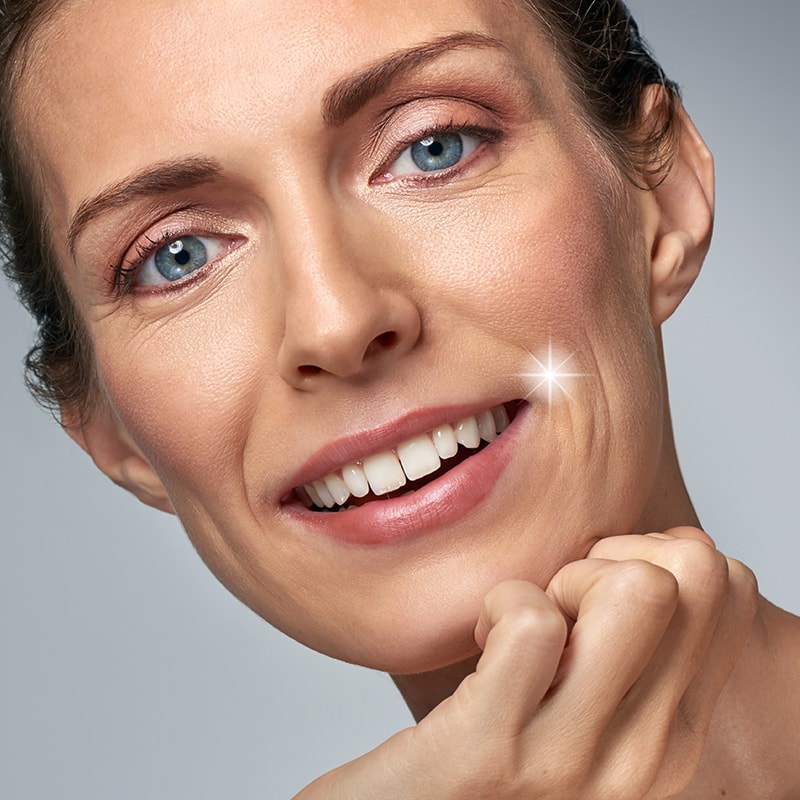Home » Beautification » Nasolabial Folds
Nasolabial Folds
Table of Contents
What are nasolabial folds ?
 Nasolabial folds, commonly known as smile lines or laugh lines, are the creases or lines that extend from the sides of the nose to the corners of the mouth. They are a natural part of facial anatomy and become more prominent with age due to the effects of gravity, facial expressions, and changes in skin elasticity.
Nasolabial folds, commonly known as smile lines or laugh lines, are the creases or lines that extend from the sides of the nose to the corners of the mouth. They are a natural part of facial anatomy and become more prominent with age due to the effects of gravity, facial expressions, and changes in skin elasticity.
What are the symptoms of nasolabial folds?
Key points about nasolabial folds include:
- Location: Nasolabial folds are located on either side of the face, running from the bottom of the nose to the outer corners of the mouth. They separate the cheeks from the upper lip.
- Formation: These folds develop as a result of repeated facial expressions, particularly smiling and laughing, which cause the skin to crease. Over time, the combination of muscle movement, skin aging, and volume loss can contribute to the formation of more noticeable nasolabial folds.
- Aging and Volume Loss: As individuals age, the face undergoes various changes, including a loss of subcutaneous fat, collagen, and elastin. This loss of facial volume, combined with the effects of gravity, can lead to the sagging and deepening of nasolabial folds.
- Genetic Factors: Genetics also play a role in the development of nasolabial folds. Some individuals may be more predisposed to forming prominent folds due to genetic factors influencing skin thickness and elasticity.
- Sun Exposure: Prolonged sun exposure can contribute to premature aging and the breakdown of collagen and elastin fibers in the skin. This can potentially accelerate the formation of nasolabial folds.
- Smoking: Smoking has been associated with premature aging of the skin. The chemicals in tobacco smoke can damage collagen and elastin, contributing to the development of wrinkles and folds, including nasolabial folds.
What are the effects of aging on nasolabial folds ?
These folds become more prominent with age due to various factors associated with the aging process. Here are some effects of aging on nasolabial folds:
- Loss of Skin Elasticity: As you age, the production of collagen and elastin, which are proteins responsible for skin firmness and elasticity, decreases. This loss of elasticity contributes to the formation of wrinkles and the deepening of nasolabial folds.
- Volume Loss: Aging is associated with a loss of fat and volume in the face. As fat pads diminish, particularly in the cheeks, the skin around the nasolabial folds may sag and create more pronounced lines.
- Bone Resorption: The bones in the face can undergo changes with age, including resorption or loss of bone density. This can affect the underlying structure and support for the skin, leading to the development of more noticeable nasolabial folds.
- Repeated Facial Expressions: Facial movements, such as smiling, talking, and laughing, involve the contraction of muscles around the mouth. Over time, the repeated folding and movement of the skin in this area can contribute to the deepening of nasolabial folds.
- Sun Exposure: UV radiation from the sun can accelerate the aging process of the skin. Prolonged sun exposure without protection can lead to collagen degradation and increased skin damage, potentially impacting the appearance of nasolabial folds.
- Genetics: Genetic factors also play a role in how the face ages. If your parents or close relatives experienced pronounced nasolabial folds as they aged, you may be more predisposed to developing similar characteristics.
What are the treatment options for nasolabial folds?
While nasolabial folds are a natural part of the aging process, there are various ways to address or minimize their appearance:
- Topical Treatments: Some skincare products containing retinoids or peptides may help stimulate collagen production and improve skin texture.
- Dermal Fillers: Injectables like hyaluronic acid-based dermal fillers can add volume to the area, reducing the depth of nasolabial folds.
- Surgical Procedures: Facelifts or other surgical interventions may be considered for more significant changes in facial appearance.
- Sun Protection: Regular use of sunscreen can help protect the skin from UV damage, slowing down the aging process.
It’s important to note that everyone ages differently, and the impact on nasolabial folds can vary from person to person. Consulting with a dermatologist or cosmetic professional can provide personalized advice on the most suitable options for addressing specific concerns.

